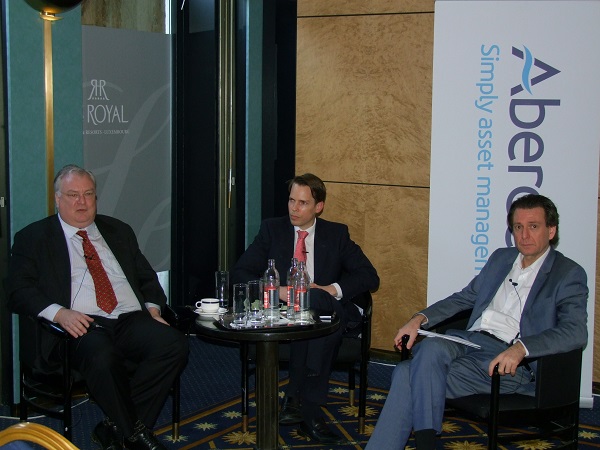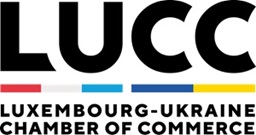
On Monday, Aberdeen Asset Management held an Asian Roadshow event at the Hotel Royal in Luxembourg city centre, following recent visits to Brussels and Amsterdam, amongst others; Aberdeen has a number of offices in Asia, including the most-recently opened in Jakarta, Indonesia.
David Pilling, Asia Editor of the Financial Times Business, provided an economic and political tour of Asia. He estimates that Asia's population will peak at 5 billion in around 2050, with many countries in the region having low population growths. He talked about China's explosive growth since 2009 by being the "world's manufacturer".
Looking back at the last 15 years, Japan's economy used to be 4 times the size of China's. In 2000, China's GDP was just 8% of the US, and now is 13%. China joined the WTO in 2001 and joined the global workforce; its wages was quintupled since 2000. In 2010, China overtook the US as the world's largest manufacturer. The online marketplace Alibaba was launched in 2000. He also touched on the leaders of some of the Asian countries who all have different personalities and agendas.
The current Chinese leadership, Xi Jinping, has done a lot to rid the country of corruption; he has encouraged the move from manufacturing to a service economy; however, the speaker feels that the move from investment-led growth to consumer-led growth will take time. China's economy is still growing at 7%.
On India, Modi is narrowing the gap between the rich in the cities and the poor in the countryside by creating an aspirational society. Growth has been 7.7% on average for the last 10 years, with average income of USD 10k. The speaker believes that India can grow even more by becoming more efficient and encouraging greater investment due to less bureaucracy. Land reform, one of the bottlenecks to growth in India, is now the responsibility of each state.
Japan has changed and is experimenting, with Japanese companies making record profits instead of sitting on hordes of cash.
He also explained that the ideal of ASEAN, a 650 million people single market od South-East Asia (excluding China, Japan and India), which comprises both rich and poor countries; both Indonesia and The Philippines have great potential.
In conclusion, he said that rising powers have historically led to war as the rest of the world has struggled to keep up. While neither America nor China wants to go to war, economic and political tensions are rising.
Hugh Young, Managing Director Asia, shared his views from the equity perspective, and stated that most countries are now must better run than they have been in the past. Thanks to the Internet, populations have been exposed to what is available.
One key theme is currencies, with the strength of the US dollar, with another being economic growth. He was sceptical concerning China's stated GDP rate of 7% and suggested it is probably closer to 3-4%. In china, he said that easier access to money is only a temporary fix, even though China is pushing the Renmimbi to be a global currency. He said he was surprised that China intervened to push up the stock market, as well as that officials allowed the market to soar as it did.
On India, key reform is happening and the Governor of the Central Bank is doing a very good job, including the issuing of new banking licences and opening the coal industry to private sector competition, as well as FDI limits restricted in various business sectors including retail and aviation.
On Economic Growth forecasts, for 2014-16, figures are well below what that have been, with emerging Asia at 6.1% for 2016, China at 6.8% and India at 7.9%, compared to 3.7% globally. Long-term prospects remain positive for all Asian countries with rich foreign reserves, particularly China.
On the broad outlook, there is uncertainty over the timing of the US interest rate hike, with a strong USD possibly leading to outflows from Asia in the near term. Asia will see cheaper energy and commodities prices; reforms are ongoing and structural weaknesses are being addressed by policymakers; companies are cutting costs. Fundamentally, people are becoming richer as economies grow.
Thomas Drissner, Senior Investment Manager, Fixed Income Asia, talked more about fixed income opportunities. He compared the performance of the Renmimbi against other Asian currencies and the US dollar, showing it has outperformed many other Asian currencies, despite a slip in August. As an income investor, he looks closely at companies that operate at over-capacity and employ too many people; current trends are for companies to become more streamlined with policymakers helping to improve the economy. Lower oil prices are certainly helping in this regards.
Over-production sectors like commodities are giving way to services which now represent more than 50% of GDP in China, with tertiary industry now having 41% of the workforce. On government debt to GDP, China's is very low (15%), with India's quite a lot higher (45%), but still way below USA and the EU (90-100%), and especially Japan (over 200%).
On India, the credit market is still fairly new and is one of the most liquid ones, making it easier in which to invest. Inflation in India has been low and has been kept low, making the Indian economy appear credible and attractive to FDI.
He acknowledged that there are plenty of opportunities across Asia, with high 10-year government bond yields and attractive underlying economic fundamentals to encourage further growth.
David Pilling then moderated an Aberdeen Asian Fund Managers panel debate with questions from the floor.
Photo by Geoff Thompson (L-R): Hugh Young, Thomas Drissner, David Pilling








